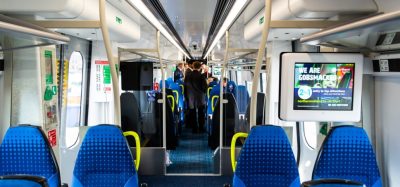Avoidable delays and inefficiencies: why it’s time to start challenging legacy processes (and what the industry can do about it)
Posted: 29 July 2024 | AtkinsRéalis | No comments yet
CP7 will shape rail’s future – and, coming at such a critical juncture, this period is an especially important one. Yet how rail responds will depend in large part not on the big picture, but the mosaic of little ones – the daily tasks, routines and processes of our industry’s workers. If the shape of rail’s future is to change, we need to first start disrupting the calcified inefficiencies that are holding our industry back.


Like many train drivers, Sam’s day begins with an alteration. The diagram has been changed at the last minute, but Sam only finds out at the depot. Redirected to another location, Sam is now against the clock, and has to hurry to absorb the mental load of this morning’s noticeboard updates, all the while begrudging the physical one – the heavy bag on their shoulder filled with bulky files and assorted paperwork. But Sam arrives at the station to discover the train isn’t there – succumbing to a fault a few hours before, with its replacement yet to appear and no certainty on when it will.
Sam might be fictional, but for Britain’s train staff starts like these are unfortunately all too real. And while passengers may not recognise the behind-the-scenes hiccups and headaches, they’re certainly familiar with the impact on their journeys. Some problems are unavoidable. Yetlegacy processes are exacerbating these problems. Old fashioned paperwork bogs down staff in laborious, time‑consuming bureaucracy, whilst limited resources prevent organisations from proactively trying novel solutions. Fragmented, siloed and outdated ways of working are hampering a collective ability to change course.
Given the scale of the challenges our sector faces around electrification, decarbonisation, and passenger satisfaction, these issues aren’t just frustrating – they’re fundamental to achieving rail’s potential. No wonder that CP7 emphasises the importance of efficiency. Unless rail gets more efficient, it won’t be streamlined, sustainable or able to deliver standout service for its customers. And ultimately, that’s how it will deliver on its potential to create a future of simple, accessible, and low‑carbon travel.
Regular day, reimagined
Let’s restart Sam’s morning – with digital innovations instead. Connected via a geotagged tablet, Sam can check for any diagram updates as soon as they clock in (which can be done remotely), meaning no unnecessary trips to the depot before then heading to a station. Instead of scanning a generic noticeboard, Sam receives electronic targeted updates – for important ones, they must confirm they’ve been read. On the tablet, they can also see their upcoming journey and note any last-minute schedule updates to it. They know exactly where the replacement train is and how to drive efficiently and maximise recovery time. And if there are service perturbations on the network ahead, Sam has access to live information on resolution timeframes and alternative journey plans – no more will they apologetically announce, ‘We’re being held at a red signal. Hopefully we’ll be on the move soon…’. Just by plugging in digital tools that already exist, we can turn yet another day of delays into a successful journey.
And these are just the basics. Digital tools offer a host of functionality that can enable greater insight as well as tackle these baseline inefficiencies. At AtkinsRéalis, our suite of digital services – designed, built, and hosted by us – is taking on that challenge. Rail Companion is to thank for many of the seamless processes in Sam’s new day. TAS (Timetable Advisory System) will also help Sam drive efficiently to timetable, and submit data back to office operational staff to analyse and evaluate the robustness of a given timetable. Diagnostyx doesn’t just report and track live faults on rolling stock, it can provide insight into the maintenance regime of that particular asset, or that class of asset across the fleet. Energyx processes and delivers energy consumption data directly to Network Rail to aid accurate billing, as well as help optimise efficiency for Train Operating Companies. All of these, and more, are small pieces of the big picture. But at scale, the benefits add up.
Shifting gears
Its ability to change is going to be a fundamental part of our railway’s future. That’s why it’s critical that these kinds of digital innovations are simple to access, not locked into inflexible contracts or proprietary ecosystems, and meet real challenges our industry’s workers face. We need to make it clear that the upfront costs of change are outweighed by the long-term benefits and compounding returns on investment. For instance, once the initial hurdle of investment in Sam’s hardware and training is made, scaling up and broadening out with new apps is both straightforward and cost-effective.
In tandem with simplifying the transition to digital tools, we also need to champion a culture of collaboration. Data-sharing is vital to complement our enhanced technological capacity. Because currently we’re missing out on the emergent insight that comes from connected information ecosystems. In future that will ensure that it becomes quicker and easier to aggregate data to power data-driven decision-making. In turn, will allow us to be more predictive and less reactive, optimising our operations using real-world, real-time data, and paving the way to real digital transformation.
Back on track
Which brings us back to efficiency and CP7. Sam’s day is fictional, but their experiences are not. All operational workers across our network face their own variants of these challenges, and the end result is a rail network that is less efficient than it could be. These inefficiencies result in delays, unnecessary costs, and a poorer experience for staff and passengers alike. However, by embracing digital technology and equipping staff with the right tools, rail can turn inefficient days into streamlined operations. Then perhaps, like Sam, we can leave the cumbersome baggage behind and accelerate to a more efficient rail network.
visit: atkinsrealis.com
Issue
Related topics
Big Data, Digitalisation, Operational Performance, Passenger Experience/Satisfaction, Technology & Software, The Workforce







